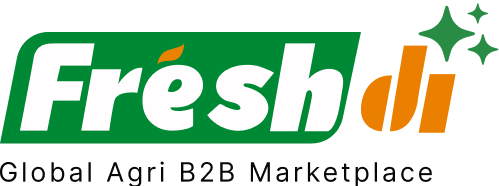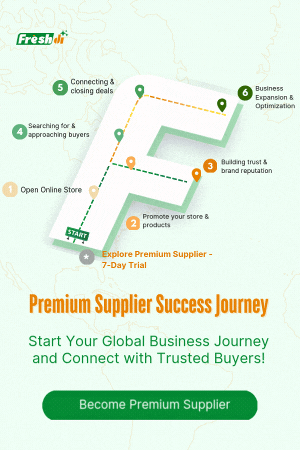Introduction – France’s Cattle Market in Statistical Focus
France isn’t just baguettes and cheese — it’s also beef and dairy powerhouse. With the largest cattle population in the European Union, hovering around 16.8 million head as of 2023, France plays a huge role in the global cattle industry. That’s a serious herd, and it’s the backbone of a thriving livestock sector that feeds both local and international markets.
Whether you’re sourcing beef cattle for meat or dairy cattle for milk, France is a prime destination for quality livestock. The numbers back it up:
- Beef Production: Among the top in Europe, France’s beef output is substantial and consistent.
- Dairy Production: In 2023, France cranked out 23 billion liters of cow’s milk. That’s second only to Germany in the EU.
- Live Cattle Exports: France shipped out around 1.4 million live cattle in 2018, mostly young animals for fattening. Italy was the top buyer.
But it’s not all smooth sailing. In October 2025, France faced a major hiccup — a rise in lumpy skin disease (LSD), a viral infection that hits cattle hard. The government stepped in with a 15-day export ban and emergency vaccinations to tackle the outbreak. It’s a reminder that even in top-producing regions, biosecurity is key.
For businesses and importers, this means one thing: you can’t afford to guess when choosing suppliers. You need data, insights, verified reviews, and export trends — and that’s where smart platforms like Freshdi come in. They help you navigate the market based on real numbers and verified supplier performance.
Let’s dive deeper.
Deep Dive – Key Production, Export Statistics & Market Signals
France is a big deal in the global cattle market — and the stats prove it. From milk to meat, the country operates at scale.
Dairy Sector: With 23 billion liters of milk produced in 2023, it’s clear that French dairy cattle are top-tier. The milk doesn’t just stay in France either — it’s used in world-famous cheeses and exported across Europe and beyond.
Beef Production: France’s beef production is central to its livestock economy. High-quality breeds like Limousin, Charolais, and Blonde d’Aquitaine dominate the landscape, serving markets that demand quality meat.
Export Trends: France’s live cattle exports focus on young stock for fattening, going mainly to Italy, Spain, and North Africa. The ability to meet diverse market needs is one of France’s strengths.
Demand indicators from platforms like Freshdi show consistent RFQ (Request for Quotation) activity — especially in Q3 of 2025, despite the temporary LSD setback. Buyers are looking for verified exporters with disease control protocols in place.
Top 10 Verified Cattle Suppliers in France – Top Tier Based on Export Data
We’ve rounded up the Top 10 Cattle Suppliers in France in Quarter 3 of 2025, ranked based on export volume, buyer reviews, certifications, and platform trust scores from Freshdi.
-
Ever Trust Global
Specializing in veal for slaughter and fattening, this supplier is known for consistent quality and strong compliance with EU animal welfare standards. -
Soupin Jean Stephane
A go-to for Friesian-Holstein cattle, this supplier caters especially to dairy farmers looking for high-yield cows. -
PLANCHON
With decades in the business, PLANCHON offers a wide range of cattle breeds and has a strong reputation for biosecurity. -
L’HACIENDA
Focused on quality genetics and breed diversity, this supplier is favored for breeding stock across Europe. -
ELO JUMP
Known for agility in logistics and transparent pricing, ELO JUMP is a reliable exporter of both beef and dairy cattle. -
ETS ALEXANDRE
A consistent performer, ETS ALEXANDRE has excellent ratings for cattle condition upon arrival and post-sale support. -
JURAVO
A versatile supplier with strong infrastructure for both local and international shipments. -
PARADIZOO
Offers specialized cattle feeding programs and breed consulting alongside export services. -
LANGUEDOC EXPORT
This southern France exporter is well-versed in Mediterranean trade routes and offers tailor-fit export packages. -
VITALAC
Not just a cattle seller, VITALAC focuses on nutritional solutions that boost cattle performance post-export.
Dynamic Ranking Note
Keep in mind, rankings can shift based on seasonal performance, export volume, and buyer reviews. Platforms like Freshdi regularly update dynamic rankings such as “Supplier of the Month” or “Quarterly Export Champions,” giving buyers a real-time pulse on the best suppliers.
Market Navigation – Statistical Trends, Price Insights & Export Dynamics
When you’re sourcing cattle, timing and breed matter. Here’s what current trends are telling us:
- Dairy Demand: There’s sustained demand for Holstein and Montbéliarde cows for high-yield milk production.
- Beef Variants: Charolais and Limousin breeds continue to dominate the beef market due to their meat quality and muscle mass.
Seasonal Price Fluctuations:
Prices tend to peak in late summer and early autumn (Q3), aligning with cattle maturity cycles and export readiness. However, disease outbreaks like LSD can disrupt normal pricing, creating temporary dips or spikes.
Purchasing Strategy Tip:
Use historical data (available via Freshdi dashboards) to track price patterns and plan purchases during low-price windows. You can also follow RFQ trends to see where demand is heading.
Conclusion – Leveraging Data for Strategic Sourcing
France’s cattle export market is robust, diverse, and full of high-potential suppliers. Despite recent challenges with lumpy skin disease, the country’s strong regulatory response and infrastructure ensure it remains a top player.
To make the most of sourcing opportunities, businesses should:
- Choose suppliers based on verified export history and certifications.
- Monitor real-time market signals like RFQ volumes and price trends.
- Use platforms like Freshdi to compare suppliers, analyze trade data, and streamline RFQs.
✅ Buyer’s Checklist for Cattle Sourcing from France
- [ ] Verify supplier certifications (EU animal welfare, health checks)
- [ ] Review export performance on Freshdi
- [ ] Evaluate breed-specific traits (dairy vs. beef)
- [ ] Monitor LSD-related restrictions
- [ ] Compare seasonal pricing trends
- [ ] Use RFQ tools for bulk quotes
Future Outlook – What’s Next for France’s Cattle Sector?
- Biosecurity Upgrades: Expect more tech-driven disease prevention strategies.
- Sustainability Focus: Low-carbon and organic cattle farming will rise in demand.
- Export Expansion: Growth in markets like North Africa and Asia will open new doors for French cattle exporters.
Platforms like Freshdi will continue to play a vital role by:
- Offering market intelligence dashboards
- Tracking exporter reliability and trade stats
- Facilitating secure B2B transactions
In short, smarter sourcing starts with better data — and France is a market worth watching.
References
- French Ministry of Agriculture – Cattle Stats
- Food Business Africa – France Cattle Export
- Reuters – Lumpy Skin Disease in France
- Reuters – France Battles Cattle Disease
FAQs
1. What is the most exported cattle breed from France?
Charolais and Limousin are among the top breeds exported for beef, while Holstein dominates the dairy sector.
2. How does LSD affect cattle exports from France?
Lumpy Skin Disease can result in temporary export bans and reduced cattle health, impacting trade volumes and buyer confidence.
3. Can I verify cattle suppliers online?
Yes, platforms like Freshdi offer verified profiles, certifications, and real buyer reviews.
4. What’s the best time of year to buy cattle from France?
Late spring to early summer is ideal to avoid high Q3 prices and ensure animals are export-ready.
5. How can I submit an RFQ to multiple suppliers?
Freshdi allows you to submit a single RFQ and receive quotes from multiple verified suppliers, saving you time and effort.


